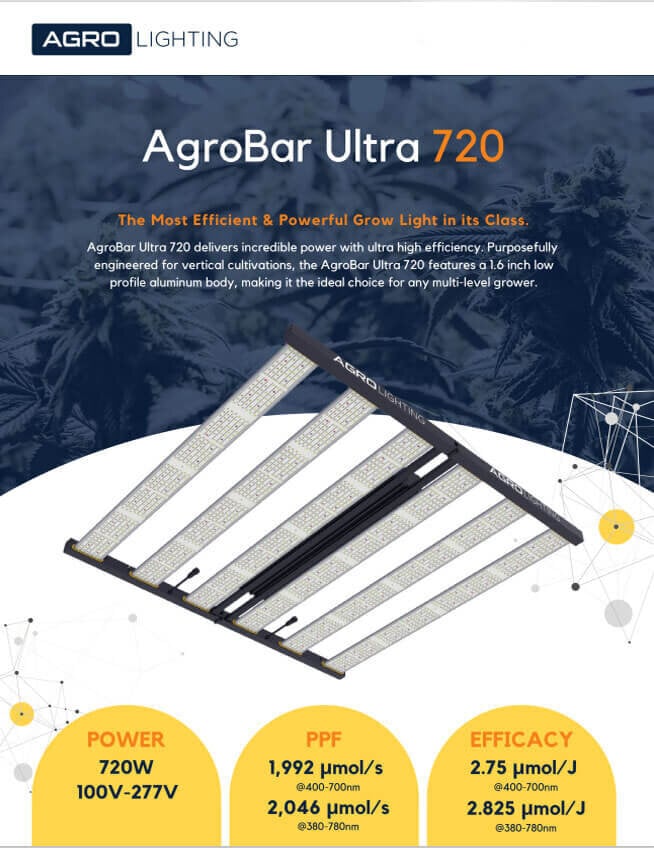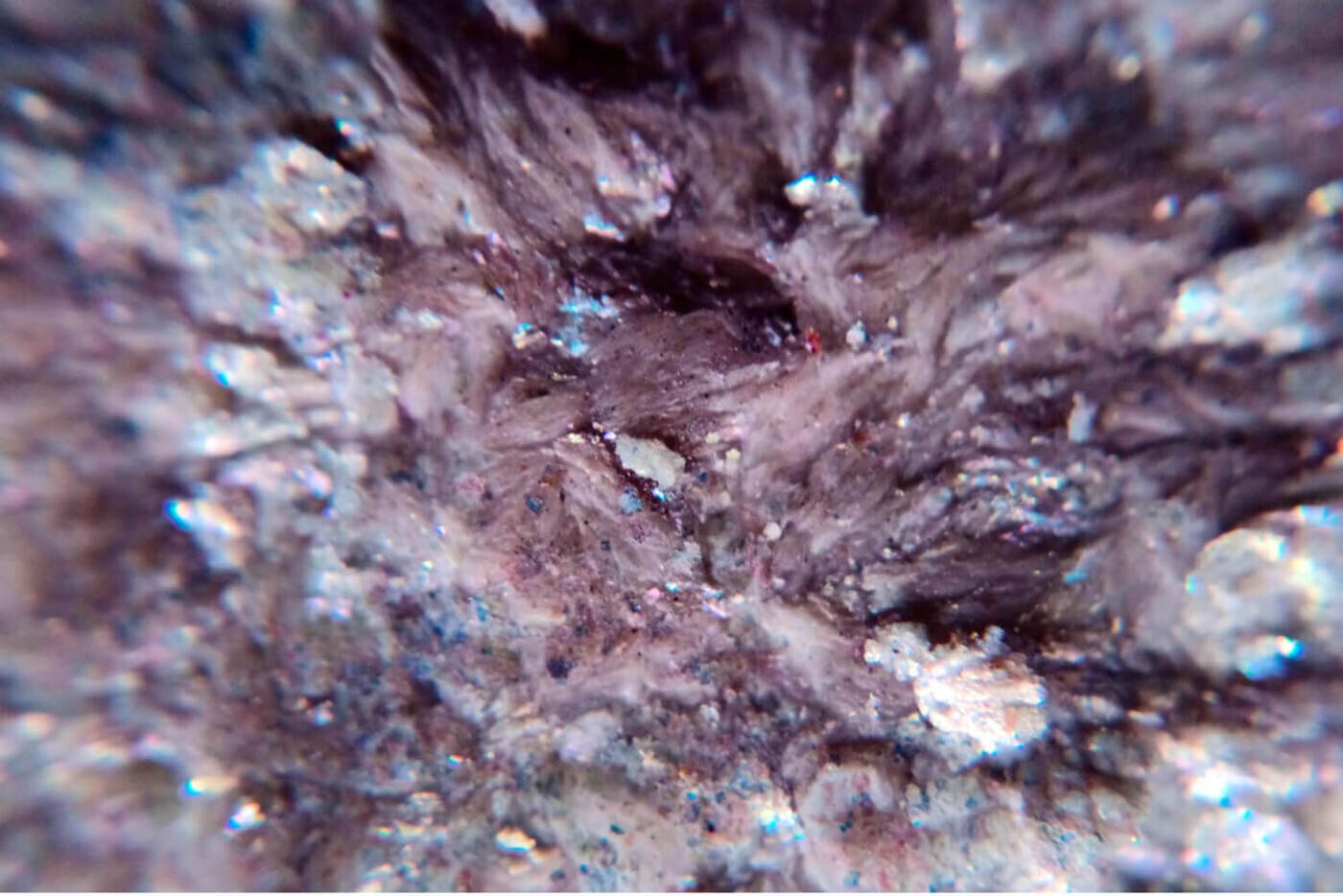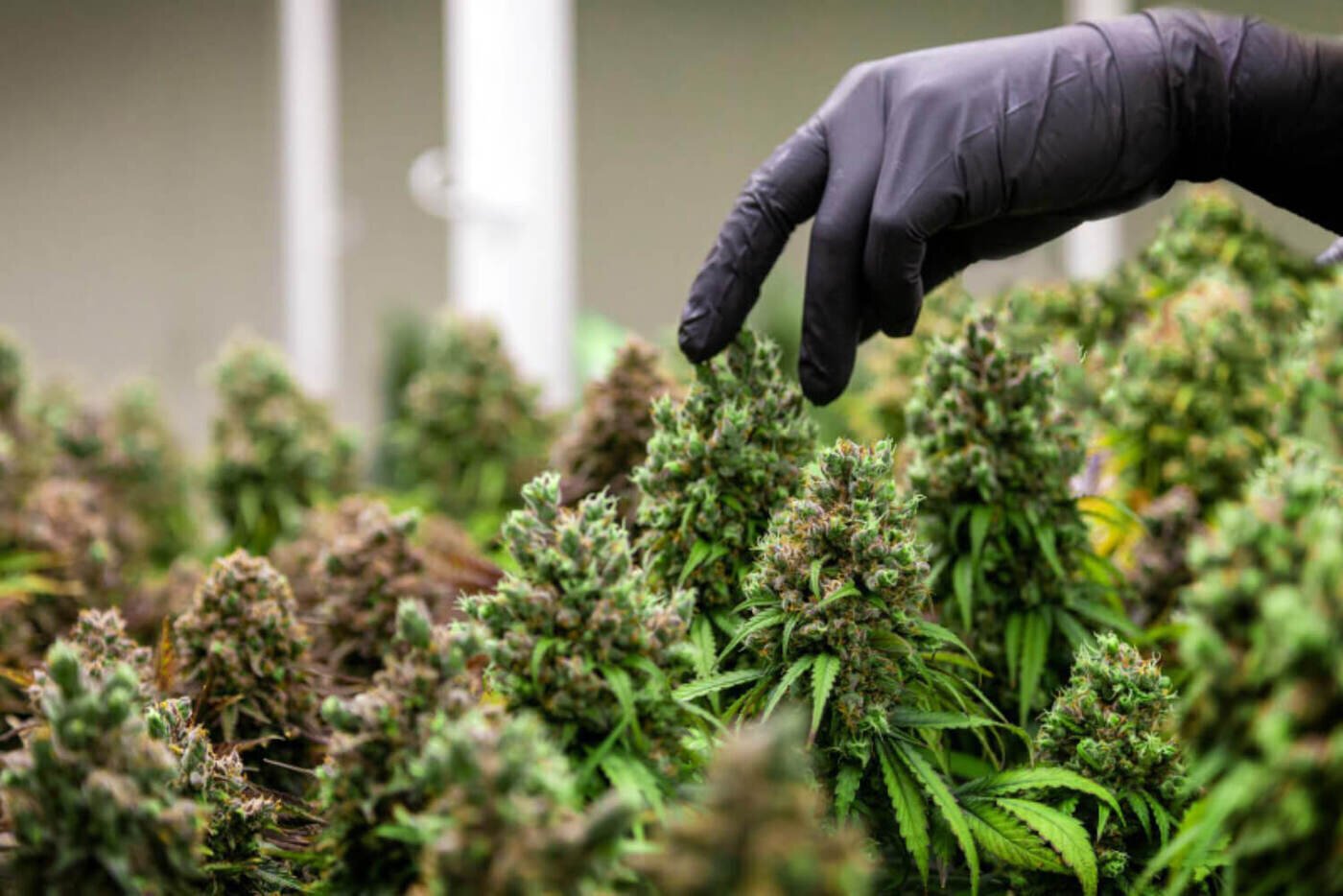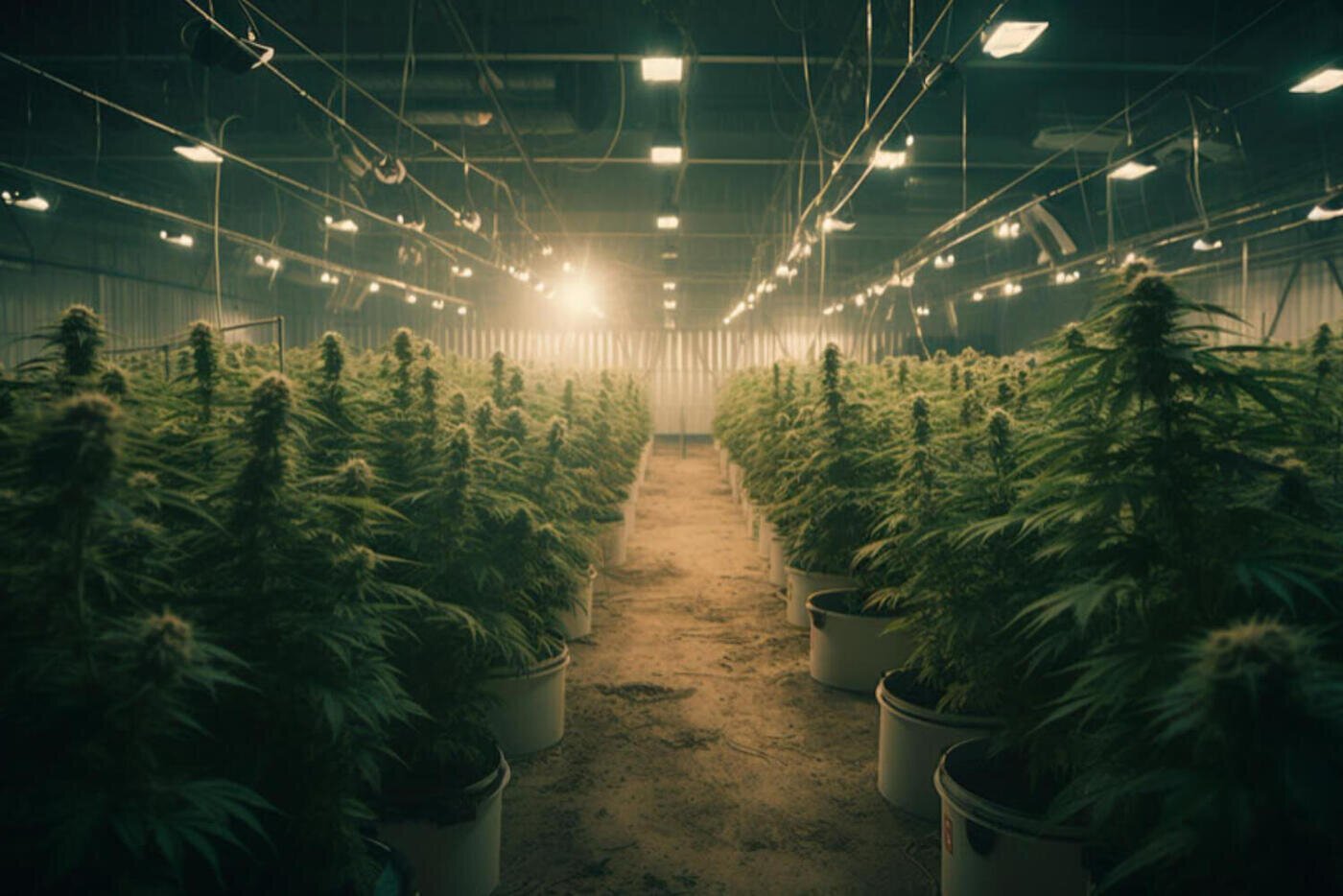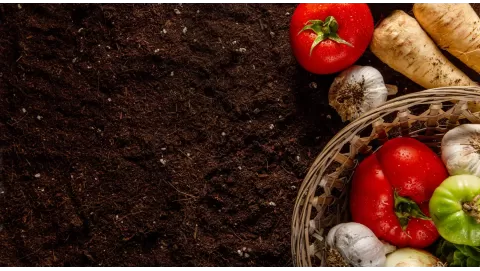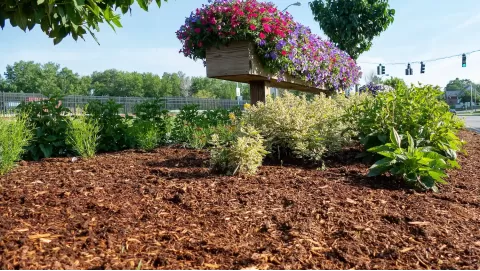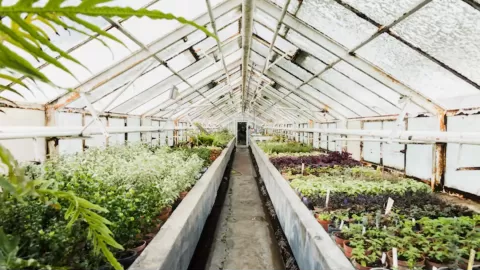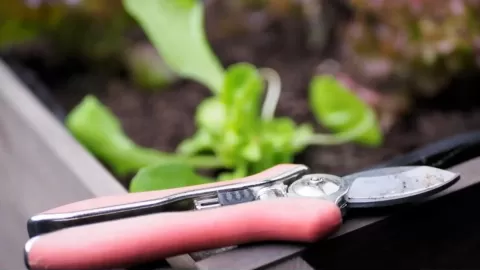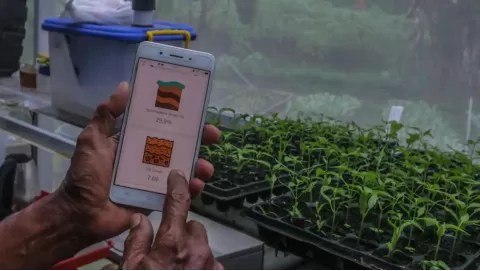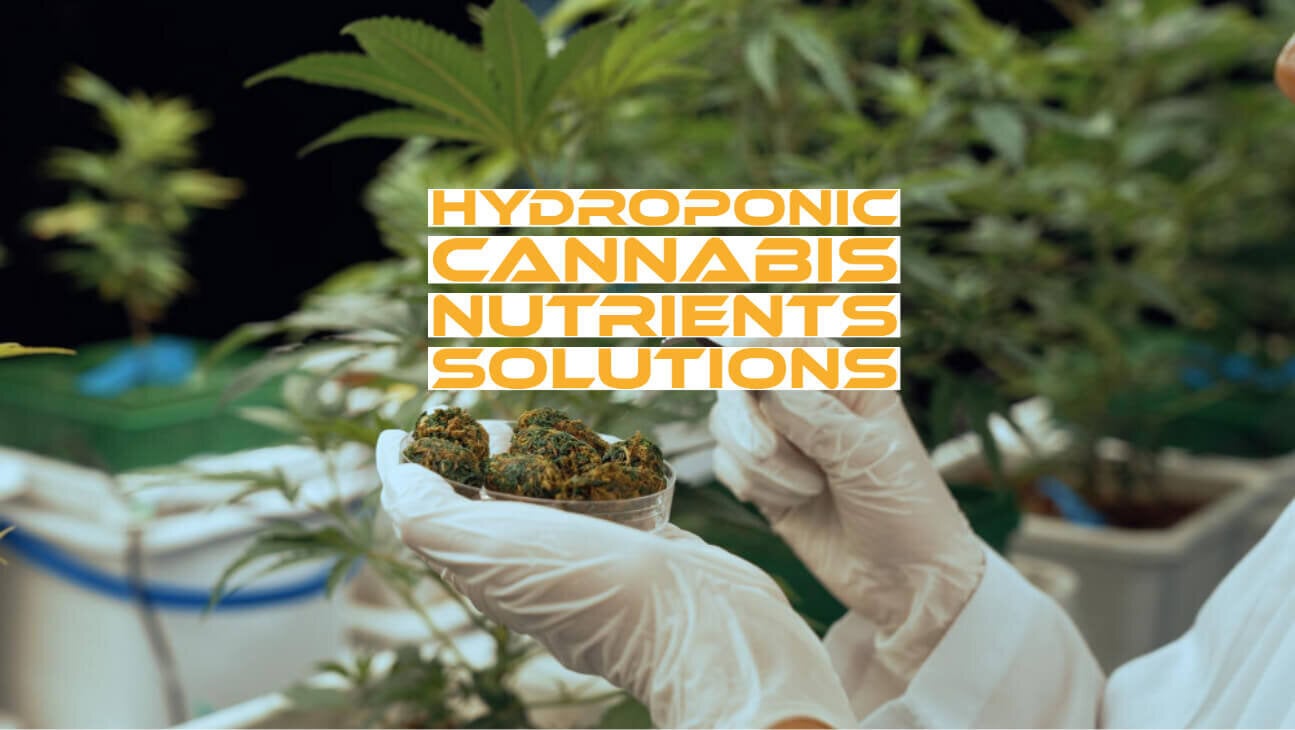
Hydroponic Cannabis Nutrients Solutions
It is critical to the success of your gardening endeavors that you have a comprehensive understanding of your plants. You have to educate yourself on the requirements necessary for their success. There is a requirement for nutrients in the food of every plant. Marijuana plants have far more stringent needs when raised in a hydroponic environment.
They can only thrive in a specific hydroponic fertilizer solution to reach their full potential. The formula for the most fantastic hydroponic feeding solution is something you're interested in learning more about. No answer can be discovered in numerical solutions applicable everywhere and to everyone. Each variety of marijuana has its prerequisites that must be met.
Why Do You Require Nutrients For Weed Growth?
Cannabinoids are the active ingredients in marijuana that are responsible for its psychoactive and therapeutic effects. It is impossible to cultivate cannabis without nuts. They supply the plants with the vital nutrients necessary for them to thrive and generate enormous, healthy buds similar to the ones you want. If you give your flowers the nutrients they need, you can significantly improve the quality and the number of your blooms. When you use fertilizers of a higher grade, you will see a rise in the amount of cannabinoid-rich buds produced by your plants. If you wish to grow cannabis plants inside, one of the most important things you can do is locate the appropriate feeding solution.
Why Should You Make Your Hydroponic Fertilizer Solution?
The process of acquiring nutrition knowledge is more challenging than one may believe. The first and most important goal is to reduce expenses. Learning the techniques required to generate your hydroponic fertilizer solution may also be satisfying. Most chemicals may be purchased at your neighborhood garden retailer or online.
When you employ a nutrition solution, you may have peace of mind knowing that your hydroponically grown marijuana plants are receiving all of the nutrients they require. The ability to produce your own hydroponic fertilizer solution gives you the ability to keep pests under control and provide superior care for your plant overall.
How Do Hydroponic Fertilizer Solutions Work Precisely?
Fertilizers mixed into the soil have the same impact as nutrient solutions generated at home using hydroponics. The end product is a liquid capable of supplying plants with all the advanced nutrients necessary for their roots to grow. The cultivation of plants by hydroponics offers a great deal of versatility. You may encourage plant growth by giving them a hydroponics fertilizer mix with a balanced nutrient profile.
Growing plants in soil requires one to consider how the ground will take in nutrients before those nutrients can reach the plant's roots, but growing plants hydroponically does not need one to make this decision. The roots may absorb nutrients directly from the soil. The same system that saves water for your plants and delivers them with nutrients also reserves water for them, minimizing the amount of time needed for upkeep. The ability to decide how much hydroponic growth solution your plants require exactly is a distinctive quality of this medium, which makes it stand out from other options.
Related: Hydroponic Nutrients for sale
Essential Nutrients For Your Hydroponic System
There are a few factors to consider while selecting the food that will provide your body with the most beneficial sustenance. Choose nourishment that does not include any biological materials at all. Utilizing fertilizers designed specifically for hydroponics will allow you to get the most out of your hydroponic system. These same nutrients are not appropriate for use in systems based on soil.
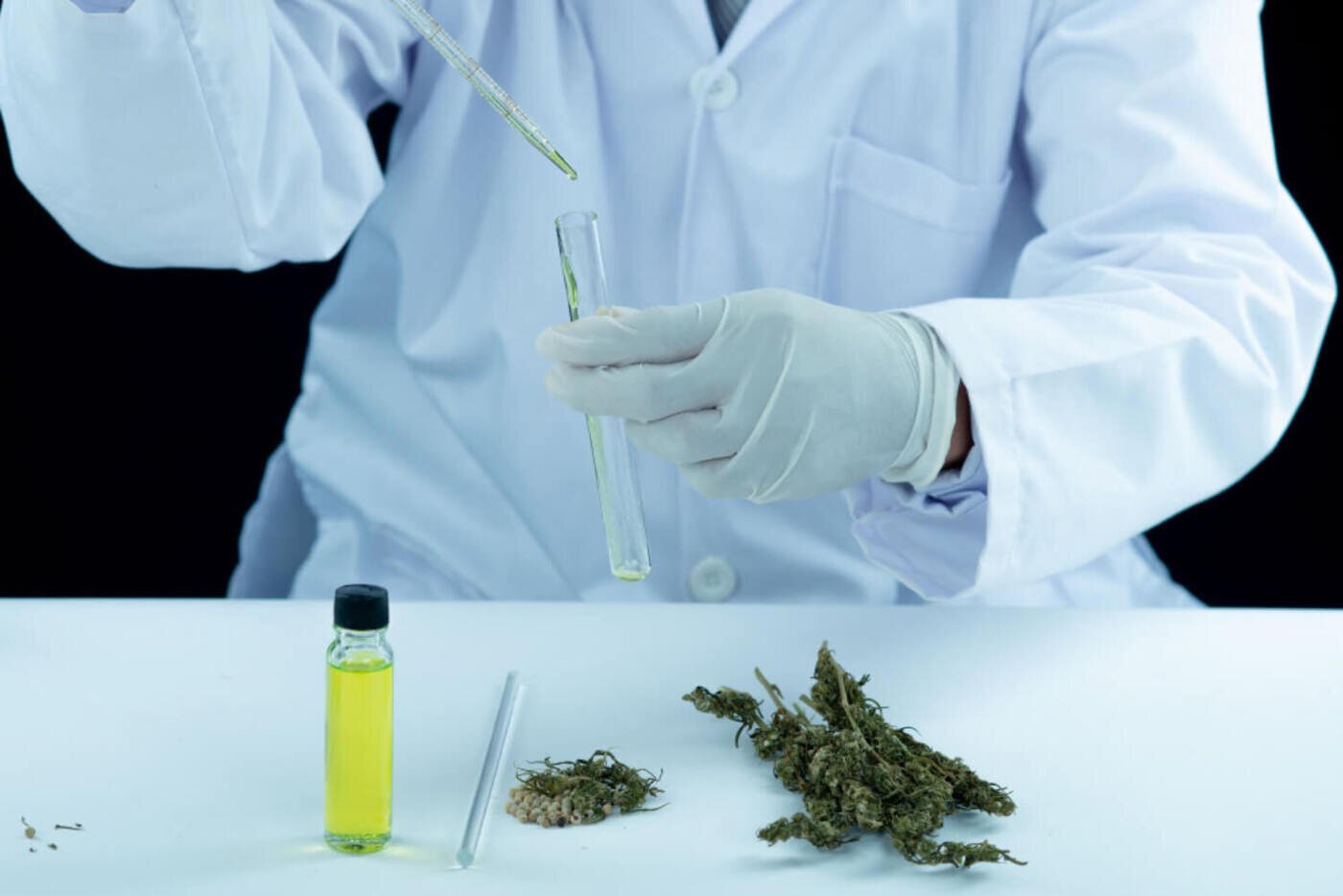
What precisely is it going to be used for? In your solution, you should not incorporate any minerals or nutrients derived from minerals, such as vitamins. Instead, consider taking chelated mineral supplements. To compensate for the deficiency of these nutrients in the soil, you should additionally apply a substantial amount of micronutrients. The plant can absorb these nutrients when water is present more easily.
Hydroponic plants will not receive nearly as much nourishment from soil nutrients as they would from other sources. These fertilizers contain various organic components, such as blood meal, worm castings, fish emulsions, and guano. You need to have a system that is streamlined, yet any organic waste may bring bacteria that are not required. Using the nutrients in a hydroponic system is impossible if they make the water hazy or cause it to float.
What Are Good Hydroponic Nutrients?
If you want your plants to be healthy and robust, you must provide them with the highest-quality hydroponic fertilizers that you can locate. Monitoring the amount of fertilizer you give to your plants is essential because nutrients are transported directly to the plant's roots via a hydroponic system. Your gardening experience and available funds will determine the best fertilizer for your plants.
Phosphorus (P) is present in the vegetative stage of the plant in proportions that are considered to be moderate, but nitrogen (N) and potassium (K) are found in concentrations that are considered to be high. During the blooming phase, there is a reduction in the amount of nitrogen (N), while there is a rise in the amount of phosphorus (P) and potassium (K). Never apply any fertilizer to a hydroponic system unless the packaging specifically states that it is safe for use with hydroponics.
The abundant levels of micronutrients in the soil, such as magnesium, calcium, iron, and sulfur, will benefit the plant you're growing. Be aware of purchasing nutrients as well because almost all organic ones require organic matter to function correctly. However, these things are only present when growing plants hydroponically. They rely on bacteria, and microbes depend on soil.
It is advised that filtered water be supplemented with trace amounts of boron, cobalt, copper, manganese, molybdenum, and zinc. This is because water filters remove minerals in addition to contaminants, and mineral deficiency can occur if these minerals are not replaced once they are removed from the water.
Choose The Right Products
How can one determine which of the numerous brands and combinations of fertilizers available on the market will result in the highest quality harvest? As time goes on, you will acquire new insights about the repercussions of this significant decision that you have made. Only with the assistance of trained specialists will you be able to identify the appropriate diet for your condition. The deciding element is the goals that you have set for yourself.
It is best not to put anything organic in the bottles because doing so might cause the organic material to decay and can also transmit germs. It is strongly suggested that chelated minerals be utilized. This results from nutrients being encased within an organic molecule that is more resistant to fluctuations in pH. So, the pH range in which the plant can take up nutrients is expanded. Ultimately, the optimum NPK ratio is one of the most critical factors.
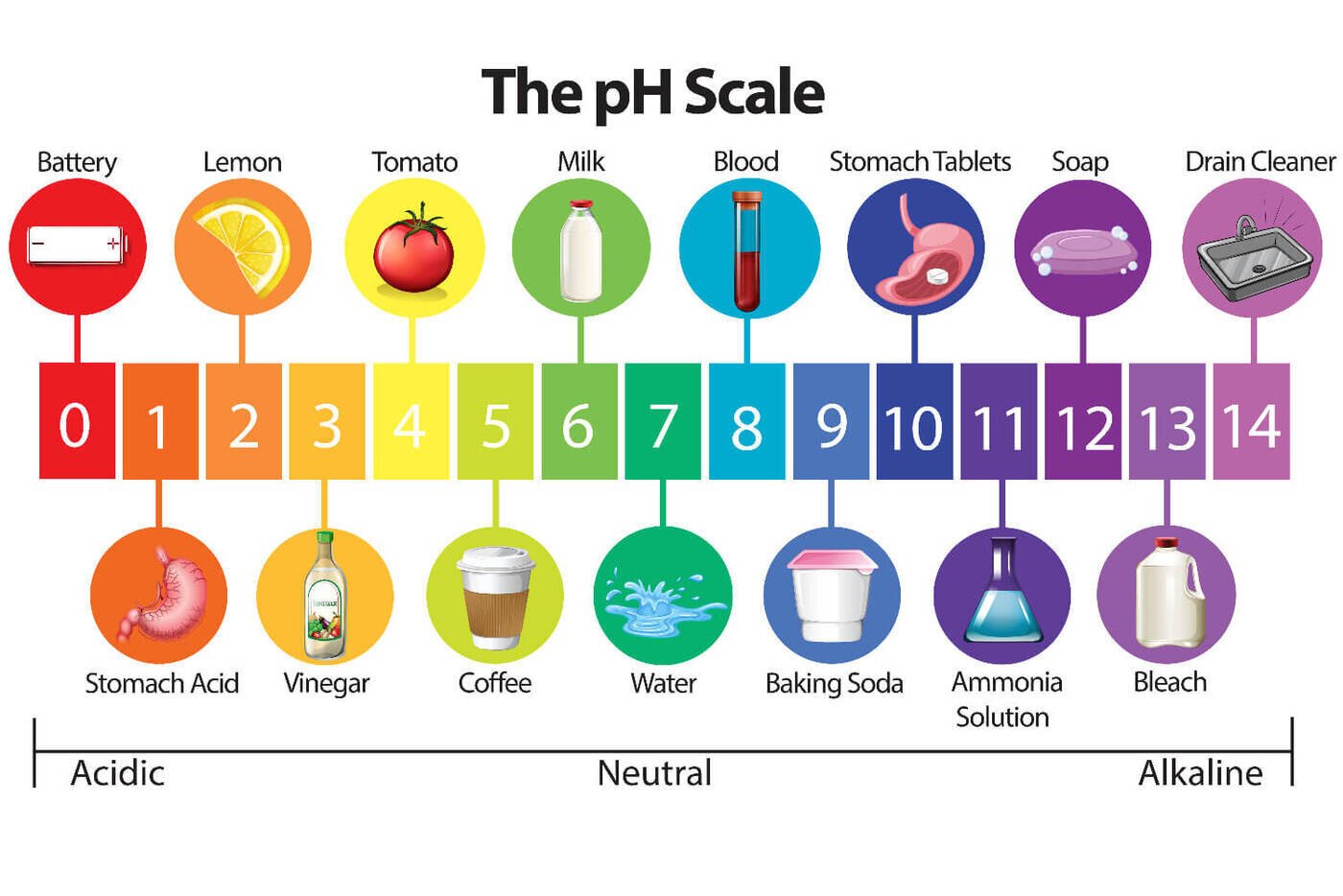
On nutrient bottles, the NPK ratio will be shown as a three-digit number, with each digit representing the concentration of a different nutrient in the bottle. The remaining portion will consist of micronutrients. The optimal ratio of nutrients will shift from one growth stage to the next as the organism develops.
During the period in which they are actively growing, plants require a great deal of nitrogen, a reasonable amount of phosphorus, and a significant quantity of potassium. As the flowering stage draws near, you should start reducing the amount of nitrogen in the soil. While you keep the other two at a high level, this one has to be held at a lower level.
Make Sure You Have The Right PH
The cannabis plant's roots have a greater capacity for absorbing some nutrients than others. Even the most well-known and respected brand of plant food will only be able to preserve your plants if the pH is correct. Cannabis plants have a difficult time flourishing in environments with a pH level that is excessively acidic. As a result, you must ensure you are constantly prepared to take remedial actions.
The leaves are frequently the first parts of the plant to display symptoms of these transformations. When they begin to turn yellow, it is an indication that the plant is lacking in either water or nutrients. Around the root zone is where you'll find the optimal pH range for nutrient absorption in hydroponic systems, which is between 5.5 and 6.5. Conversely, 5.7 is the ideal score to strive for in this situation.
When you need to adjust the pH of a solution, you shouldn't always choose a solution that stabilizes the pH. When working with items of this kind, you still need to give complete attention to the task. It would help if you got into the habit of cleaning your skin frequently before turning to treatments that alter pH.
Comparing Hydroponic System To Soil
Hydroponic systems offer advantages since they enable greater control over the plant's intake of nutrients. Because water and oxygen are constantly there, the only other factor to consider is the quantity and composition of the nutrients you provide your plants. Using this more experimental technique could, on the other hand, reduce some of the appeals of traditional methods of marijuana production.
It is possible to boost the general health of your plant by amending the soil with manure, a resource-rich in nutrients. There is no nutritional product that can deliver the same effects. The bacteria that live in soil are beneficial to plants because they assist in the decomposition of organic substances such as guano, worm castings, and other items that can be composted. However, hydroponics requires the direct administration of both micronutrients and macronutrients for the plants to succeed.

You will still need to supplement the soil to obtain the most outstanding results, regardless of the soil's quality where you live. This is the fundamental difference that can be drawn between hydroponic and soil-based techniques of plant cultivation. Most soils also include abundant quantities of other vital micronutrients, such as iron, copper, and magnesium.
To compensate for the discrepancy, there must be a greater quantity of these in the hydro solutions. The amount of nitrogen that is contained in the soil likewise rises. Thus, a significant amount of nitrogen is present in hydro nutrients while the plant is actively developing.
Related: Hydroponics supplies for sale
Cannabis Nutrient NPK Ratios In Hydroponic Systems Must Be Optimal
The "big three" plant nutrients are nitrogen, phosphorus, and potassium. These nutrients are denoted by the letters N, P, and K, respectively (potassium is denoted by "K" since chemists use the symbol K for potassium in the periodic table). There is a three-digit code on the side of each and every nutrition bottle that indicates this.
Each component contributes its own unique set of benefits to the plant as a whole. In general, nitrogen is responsible for driving vegetative growth, phosphorus is responsible for supporting the development of roots and flowers, and potassium is responsible for promoting photosynthesis and root growth. As a result, the best fertilizer for action during the vegetative stage is one that is rich in nitrogen, while the best fertilizer for growth during the blooming phase is one that is high in phosphorus. Fortunately, the producers have already completed all of this labor on your behalf.
Suppose you want to grow cannabis hydroponically with the most significant possible results. In that case, it is essential to provide the plant with the precise ratio of these essential nutrients at the appropriate time so that the plant receives precisely what it requires at the ideal time. For instance, even though the plant is in perfect condition, if you give it excessive nitrogen during the blooming and budding phase, it will decrease yields and prevent the creation of buds, which is not what you had in mind at all!
What Do You Need To Make Your Hydroponic Solution?
To formulate your own hydroponic solution, you will require macronutrients and micronutrients. It is possible that the measurements you use to pour the solution over your garden during the various stages of development will change based on the strain of marijuana you wish to harvest. Because it is a gas, the nutrient water used in hydroponics cannot have any of it added. Nevertheless, carbon dioxide is a necessary component in the formula.
This gas might provide your cannabis plants with a natural supply of energy and oxygen if they want to. However, it would help if you first acquired an understanding of carbon dioxide before moving on to the nutrients. You can raise the overall concentration of carbon dioxide in your hydroponic system by using carbon dioxide generators. The combination of the gas with the light that your plants are exposed to and the nutrients that are present in your fertilizer solution has the potential to boost the output of hydroponic crops.
Macronutrients
The following macronutrients are required to be included in the hydroponics fertilizer mix:
- Nitrogen
- Phosphorus
- Potassium
The macronutrients you provide to your weed plants will be of the utmost importance. If they were not there, the development of the plant would be slowed down, the stems would break off, and the plant's color would turn a sickly yellow. The following is a list of the impacts that each nutrient has.
Nitrogen
Nitrogen is an essential nutrient to consider when developing feeding solutions for hydroponics. Only by paying attention to this part can you ensure that the plant will grow normally. Everything is included, from the leaves and stems to the branches and buds. It also contributes to the production of chlorophyll, which is what gives your plant its green color.
Nitrogen needs to be a part of the DIY hydroponic solution you use if you want to see an increase in the creation of proteins and enzymes. The absence of nitrogen can have far-reaching repercussions beyond simply producing a product with poor quality. Consequently, the marijuana plants you have will exhibit signs such as delayed blooming and leaves that have turned yellow.
Phosphorus
In your hydroponic garden's feeding mix, phosphorus is just as important as nitrogen. You need to teach your plant how to remember its genetic makeup so that it may continue to reproduce successfully. In contrast to nitrogen, the phosphorus levels in plants should be decreased as they get closer to the mature stage of their development. Phosphorus and nitrogen levels in the hydroponic fertilizer solution you use should stay the same from the beginning of the growth phase until the commencement of the blooming period. During the blooming stage, an excess of phosphorus can have the opposite impact of a deficit, which can impair a plant's capacity to utilize other nutrients.
Potassium
Without enough quantities of potassium, marijuana plants will not be able to survive or reproduce. Without this element, it is impossible to cultivate plants using hydroponics since it activates various enzymes successfully, contributes to the process of photosynthesis, and assists plants in metabolizing proteins. A lack of color in the leaves is indicative of a potassium deficit. When growing cannabis hydroponically, it is necessary to pay close attention to the proportion of potassium to other minerals, such as magnesium, zinc, and iron, as the plant matures.
Micronutrients
To make your hydroponic solution, you will need to add the following micronutrients:
- Boron
- Calcium
- Copper
- Iron
- Magnesium
- Manganese
- Molybdenum
- Sulfur
- Zinc
In addition to macronutrients, your hydroponic fertilizer solution must also contain micronutrients. Because your garden produces the vast majority of these components, you are not required to purchase them in large quantities. They do, however, play some part in the growth of marijuana plants, although a very little one. Each of these nutrients has its unique impact.
Boron
You might be able to boost cell division and development in your cannabis plants if you add this nutrient to the hydroponic solution that you're using to produce them. If you feed your marijuana crop with boron, you may anticipate that it will create a more significant number of flowers and buds.
Calcium
Calcium is necessary for normal human development, and the same is true for the growth of healthy marijuana plants. This nutrient is essential to the growth of your cannabis plant when grown hydroponically since it stimulates cell division, which is necessary for the plant's expansion.
Copper
Copper added to the hydroponic feeding solution that you are using to cultivate cannabis will benefit the plant's metabolism. Because an excess of this mineral might cause the stems and roots of the plant to wither, only trace amounts are required for respiration in a plant.
Iron
Your plant's brilliant, emerald green hue may be achieved using hydroponic fertilizer containing iron. The yellowing of the leaves on your weed plant might be a sign that the plant is suffering from a lack of iron, which is essential for forming chlorophyll.
Magnesium
For chlorophyll to perform its biological purpose, the hydroponic fertilizer solution must include magnesium. Magnesium stimulates oxygen generation and makes for more effective usage of the plant's resources by your weed crop. It is an essential dietary supplement, particularly for marijuana strains that blossom in a shorter amount of time.
Manganese
One of those uncommon minerals with a wide range of applications, manganese can be beneficial to the growth of your cannabis crop. A trace amount of the mineral should be added to the hydroponics fertilizer mix so that your plants may benefit from increased respiration and nitrogen uptake during photosynthesis. Marijuana plants benefit from manganese. Manganese is beneficial to marijuana plants because it strengthens their disease resistance. Be careful not to overdo it because you run the danger of harming your plants and seeing blotches of brown and red on the leaves of their leaves.
Molybdenum
The quantity of molybdenum in your hydroponics fertilizers is most likely the least significant component. The mineral is essential for optimizing the performance of proteins and increasing their production. It is helpful in the process of breaking down nitrogen as well as producing amino acids from the protein in the diet.
Exercise extreme caution when including this mineral in the recipe for your hydroponics fertilizer. There is a possibility that your plants could have substantial discoloration, loss of foliage, and possibly deformed blooms. In addition to this, plants may be deprived of essential nutrients such as carbon dioxide.
Sulfur
The synthesis of proteins depends on a chain of amino acids, and sulfur is an essential component of any hydroponic solution intended for do-it-yourself use. Additionally, it improves the plant's ability to absorb vitamins from the soil and any additional nutrients you provide for them. Caution is required when working with sulfur since it is a mineral that, if used in excessive amounts, can become invasive and alter the flavor of cannabis. If you do not give it to your plant, its development will be hindered, and in certain situations, it may even become brittle and decrease in size.
Zinc
The final micronutrient on the list is a crucial component that has to be included in every hydroponics fertilizer formulation. Without zinc, your weed plants won't be able to produce proteins. By managing the growth of the stems as well as the overall size of the plant, it enables you to keep your plant at a healthy length during the vegetative period.
Hydroponic Nutrient Solution: Five Simple Steps To Success
You can get the knowledge necessary to create your own hydroponic solution. Even if you have no prior expertise with gardening, hydroponics makes it simple to fine-tune your recipe and significantly accelerate the development of your marijuana.
1. Confirm that you require the nutrition solution
When you produce your hydroponic feeding solution, you are responsible for the costs associated with purchasing the raw ingredients. If the size of your hydroponic system is more modest, you should buy nutrient solutions rather than trying to make them on your own.
2. Purchase some ordinary fertilizer
After your business has reached a particular size threshold, you will be required to begin purchasing conventional fertilizer. This is the foundational component of the hydroponic nutrition mix that you have. This dish provides nearly all of the necessary macro- and micronutrients in the appropriate proportions. Make sure it dissolves in water.
3. Calculate how much water you'll need
Determine the amount of water that your desired strain needs. Combine one gallon of water and two teaspoons of the fertilizer formula to produce a fertilizer mix for use in hydroponics. This dosage of marijuana is often used with the vast majority of cannabis strains.
4. Keep mixing the ingredients
Now is the time to start preparing the hydroponic solution! Examine the solution's pH level to ensure it is not excessively acidic. If you want to provide your plants with a boost, the suggested amount of Epsom salts per gallon of water is one teaspoon.
5. It's time to feed your plants some nutrients
Different weed species have different nutrient needs. It would help if you kept it in mind. Before dousing your plants in a hydroponic fertilizer solution that you produced yourself, it is essential to do your research.
The Ultimate Guide To Growing Marijuana Indoors Using Hydroponic Nutrients
If you want the best possible results from utilizing hydroponic fertilizers, you should keep a few things in mind. The most crucial step is ensuring your plant receives food at the appropriate periods during its growth cycle. It's possible that your plants may suffer if you fail to give them fertilizer.
To get the most out of the nutrients in your food, try following these easy steps:
1. Ensure you have thoroughly read the directions before using the product. After reading this, you will have a lot simpler time determining when and how to apply them appropriately.
2. Follow the instructions on the back of the packet and combine the water and the fertilizers.
3. Add the slurry to your garden or hydroponic system and mix thoroughly.
4. Be sure to keep your plants on a regular schedule for watering and providing them with light.
5. When the buds have reached the stage in their development where you are happy with them, harvest them.
What Is Ph, And Why Is It Crucial In Cannabis Cultivation?
The pH value of a material can be used to identify whether or not it is acidic or alkaline. A precise pH is necessary for plant growth because it determines which nutrients are available to the plant. In order for cannabis plants to grow, the pH levels in their habitats, whether they be soil or hydroponic, must remain stable.
Absorption issues, such as nutritional lockout, may occur if the pH of the plant's environment is too high or too low. When a plant suffers from a nutrient lockout, it is unable to make use of the nutrients that are present in its environment. Therefore, the presence of a high number in the liquid feeding solution that you are using only sometimes indicates that your plant is making use of the nutrients that are present.
The utilization of pH up and down solutions makes it possible to easily monitor and change pH levels, which is a very positive development. Testing the pH of water and soil consistently and achieving a balance is critical to the health and well-being of plants.
Chemical Analysis Of Nutrients
You must regularly inspect your hydroponic system for nuts for two reasons.
- First, it enables you to determine whether the nourishment your plants receive is sufficient.
- Second, if you're experiencing troubles with your diet, it can assist you in determining what exactly is going wrong with it.
You can determine how much of a particular nutrient is present in your system by utilizing a pH meter in conjunction with a TDS meter. One piece of equipment calculates the total dissolved solids (TDS), while another piece of equipment evaluates the acidity and alkalinity of the solution. A pH meter may be used to assess the amount of acidity or alkalinity in a nutrient solution after the solution has been allowed to settle for a few seconds. After that, the screen displays the pH value at the present time.
Put the TDS meter into the container with the nutritious solution, and then wait a few seconds to allow the solution to settle before removing the meter. Following that, the reading from the TDS will be provided. Check the pH and TDS levels in your hydroponic system on a regular basis. You will be able to guarantee that your plants are getting an appropriate quantity of nutrients and that everything is operating as it should.
Different Growth Stages
Cannabis goes through two distinct stages of development during its life cycle: the vegetative stage and the flowering stage. Each step calls for a different ratio of NPK (nitrogen, phosphorus, and potassium) components to be applied. During the vegetative stage, the plant requires high quantities of nitrogen, medium to high levels of phosphorus, and high levels of potassium. During the flowering stage, it is essential to have a low nitrogen content, high phosphorus content, and increased potassium content.
An excessive amount of nitrogen impedes the growth of the buds and also changes the finished product's flavor. Once the plant's flowering period has begun, the plant will start to develop buds. Phosphorus stimulates the growth of more blooms, whilst potassium makes the buds denser and more weighty.
It is, therefore, vital to keep an eye on the growth of the plant and administer the appropriate amounts of hydroponic fertilizers. A low harvest or the plants' demise might result from inadequate care for the plants. So, it is of the utmost importance to supply them with the appropriate hydroponic nutrients and to attend to their requirements at all times.
Soil And Hydroponic Nutrients
These two types of fertilizers cannot be substituted for one another because of the significant differences between hydroponic fertilizers and nutrients found in soil. Because they include organic particles, soil nutrients have the potential to choke up a hydroponic system. Hydroponic systems call for the direct feeding of fertilizers and micronutrients to plants, whereas soil-based systems allow these chemicals to break down naturally and give their nutrients to plants.
Additionally, because they are high in phosphorus and low in nitrogen, the nutrients found in soil are unsuitable for developing cannabis using hydroponic methods. Because they provide a more controlled environment for the plant, hydroponic fertilizer systems are frequently regarded as superior to soil nutrient systems. It is essential to select the most suitable strategy for your growing circumstances, even though each approach has its own merits.
It is vital to remember that hydro systems call for a different feeding schedule than soil systems. Because the plant's roots are supplied directly with the nutrients they require, hydroponics allows you to make immediate modifications. Which is superior between soil cultivation and hydroponics is a matter of much debate, one that is still being discussed.
After deciding to move forward with it, the next step is to find out which particular components will serve your purposes the most effectively. These will be unique to each cultivator and will depend on their tastes, degrees of technical competence, and dedication to the process. You have the choice to go with feeding options that demand less attention from you, or you may decide to take control over every variable that can influence your yield.
You must avoid reading your way out of the burden of deciding these matters on your own. Therefore there is no use in trying. You will certainly face challenges that call for your attention, regardless of your level of skill in the subject matter. This is how one obtains a level of comprehension.
Do not give up simply because you have lost one of your plants. Hydroponic systems have the potential to cultivate potent and high-quality buds. Your efforts will not go unnoticed and will be appreciated. Assuming you have learned the skill of reading the signals your plant sends, you have no reason to be concerned.
The Bottom Line
Cannabinoids are the primary components of marijuana that are responsible for both the euphoric and medicinal effects of the drug. Without nuts, it is difficult to develop cannabis successfully. They provide the plants with the essential nutrients that are necessary for their growth, allowing the plants to flourish and produce big, robust buds that are comparable to the ones you want.
If you provide your flowers with the nutrients they require, you will see a considerable improvement in both the quality and quantity of the blooms they produce. When you feed your plants with fertilizers of higher quality, you will notice an increase in the number of buds that are rich in cannabinoids that they generate. Finding the right feeding solution is one of the most crucial things you can do if you want to cultivate cannabis plants inside, and it's one of the things you can do right now.
When you use a nutrition solution, you may have the peace of mind that comes along with knowing that the marijuana plants you are growing hydroponically are getting all of the nutrients that they require. You will have the capacity to keep pests under control and provide superior care for your plant in general if you are able to manufacture your own hydroponic fertilizer solution.
The effects of nutrient solutions produced at home with hydroponics are equivalent to those of fertilizers that are worked into the ground. The finished product is a liquid that is capable of providing plants with all of the nutrients that are essential for the growth of their roots. There is a significant degree of flexibility available through the use of hydroponics in plant growth. You may promote the development of plants by providing them with a hydroponics fertilizer mix that has a nutritional profile that is well-balanced.
The roots may take up nutrients straight from the ground. The same system that feeds nutrients to your plants and saves water for them also stores water for them, which reduces the amount of time that is needed for maintenance. The fact that you are able to determine the precise amount of hydroponic grow solution that your plants need is one of the distinguishing characteristics of this medium, which helps it stand out from the other available choices. Growing plants in soil needs one to make decisions about how the soil will take in nutrients before those nutrients can reach the roots of the plant, but growing plants hydroponically only requires one to make these sorts of decisions.
It is necessary to have both macronutrients and micronutrients in order to create your own hydroponic solution. It is likely that the quantities of the solution that you pour over your garden at the various phases of growth will alter depending on the strain of marijuana that you intend to harvest. This is something that you should keep in mind. It is impossible to include any of it in the nutrient water that is utilized in hydroponics because it is a gas. Despite this, carbon dioxide is an essential ingredient in the mix.
Disclaimer: This material is for informational purposes only and should not be relied on for legal, medical, financial, or any other form of professional advice.

